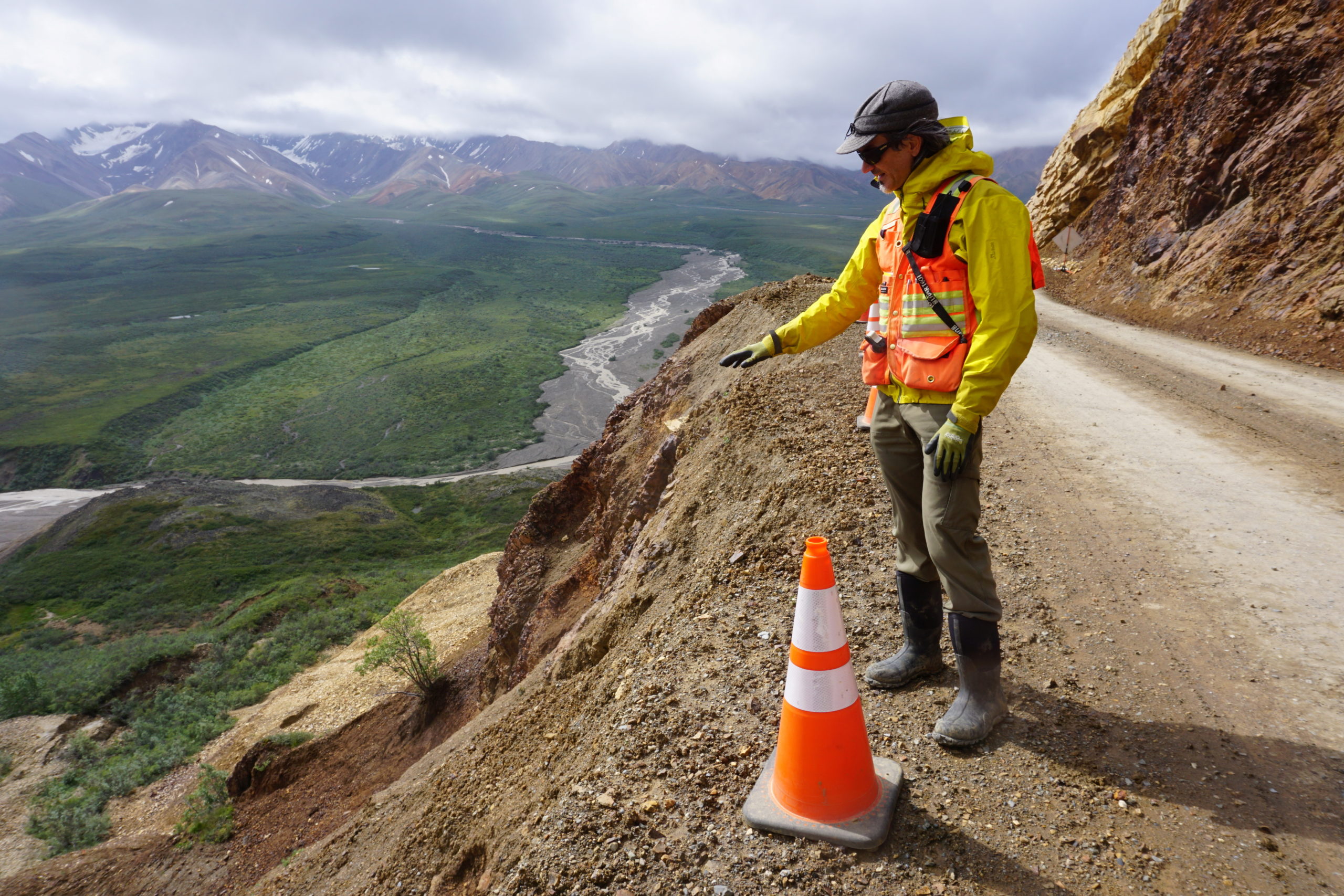A new bridge is planned at the site of a permafrost thaw-induced landslide in Denali National Park
The main road in one of Alaska's top tourist destinations was closed for safety reason last year.

In the North, where permafrost thaw and glacial melt has destabilized slopes, one of the best-known landslide risks is poised for a major safety improvement.
Last month, federal officials released a draft environmental assessment of their plan to erect a suspension bridge at the midpoint of the sole road in Alaska’s Denali National Park, a spot where ongoing thaw-induced landslides became so dangerous last summer that the area had to be closed to tourists.
The trouble spot is called Pretty Rocks, located at about the halfway point of Denali’s 92-mile road. It has been slipping gradually for decades, but as air temperatures rose in past years, so did the movement of the slope. It sped up from a few inches a year in the early 2000s to a few inches a week in the mid-2010s, according to the Park Service. Last summer, it substantially sped its movement to more than a foot a day. The park shut off traffic at the site in August, putting an abrupt end to the tourist season at iconic Denali sites like scenic Wonder Lake, which is at the end of the park road, and high-elevation Polychrome Pass, adjacent to the Pretty Rocks slide.
[Landslides have prompted a partial closure of Alaska’s Denali National Park]
Maintenance work conducted up until last summer will not be enough to ensure the safety of the sole road in one of Alaska’s top tourist destinations, Jakara Hubbard, a Denali official, said at a public meeting on the environmental assessment.
“The road is beyond repair. And without action, the Polychrome section of the road would remain closed indefinitely,” Hubbard, who is helping manage the review process, said at the online meeting.
The proposed suspension bridge would be costly and require intense and disruptive construction work. The estimated price tag is $91 million, of which $25 million has been made available through the Infrastructure Investment and Jobs Act, according to the Alaska Congressional delegation. Construction would require two years of work, starting this year, with no visitor land access beyond the Pretty Rocks area for the first year and some limited access allowed the second year, according to the environmental assessment. There would be disturbances to wildlife and the wilderness setting from noise and other construction effects, according to the assessment.
[Thaw-triggered landslides are a growing hazard in the warming North]
However, the other action alternatives are worse in both costs and impacts, as park officials described them at the meetings. The rejected alternative of excavating all the thawing ice-mixed terrain would be something akin to a “mountaintop removal” and would fail to address the risk of thaw in deeper permafrost, Hubbard said at the Jan. 26 meeting, one of two online public meetings on the environmental assessment.
While the Pretty Rocks area is the top priority at Denali, landslide work is unlikely to stop there. About 150 landslides have been identified along the road corridor, including others that have forced brief closures in recent years, according to the Park Service.
“As time goes on and more permafrost thaws and conditions change, we probably will be doing more work along the road,” Denali spokeswoman Miriam Valentine said at the meeting. “I think that is a high probability in our future.”
Climate change has increased landslide hazards in mountainous parts of the world beyond the Arctic. Some are triggered by extreme rainfall, which, like permafrost thaw and glacier melt, is linked to climate change.
Extreme rainfall is also a factor in Alaska landslides, including at Denali. Rain is an effective conduit of heat to thaw permafrost or melt glaciers and ice sheets, and it has loosened Alaska slopes in other ways.
In December of 2020, torrential winter rains triggered a series of massive landslides in the southeast Alaska town of Haines, and two people died after their house was buried in debris.
In 2015, a rain-triggered landslide killed three people in Sitka, inspiring the creation of a warning system in that southeast Alaska town.